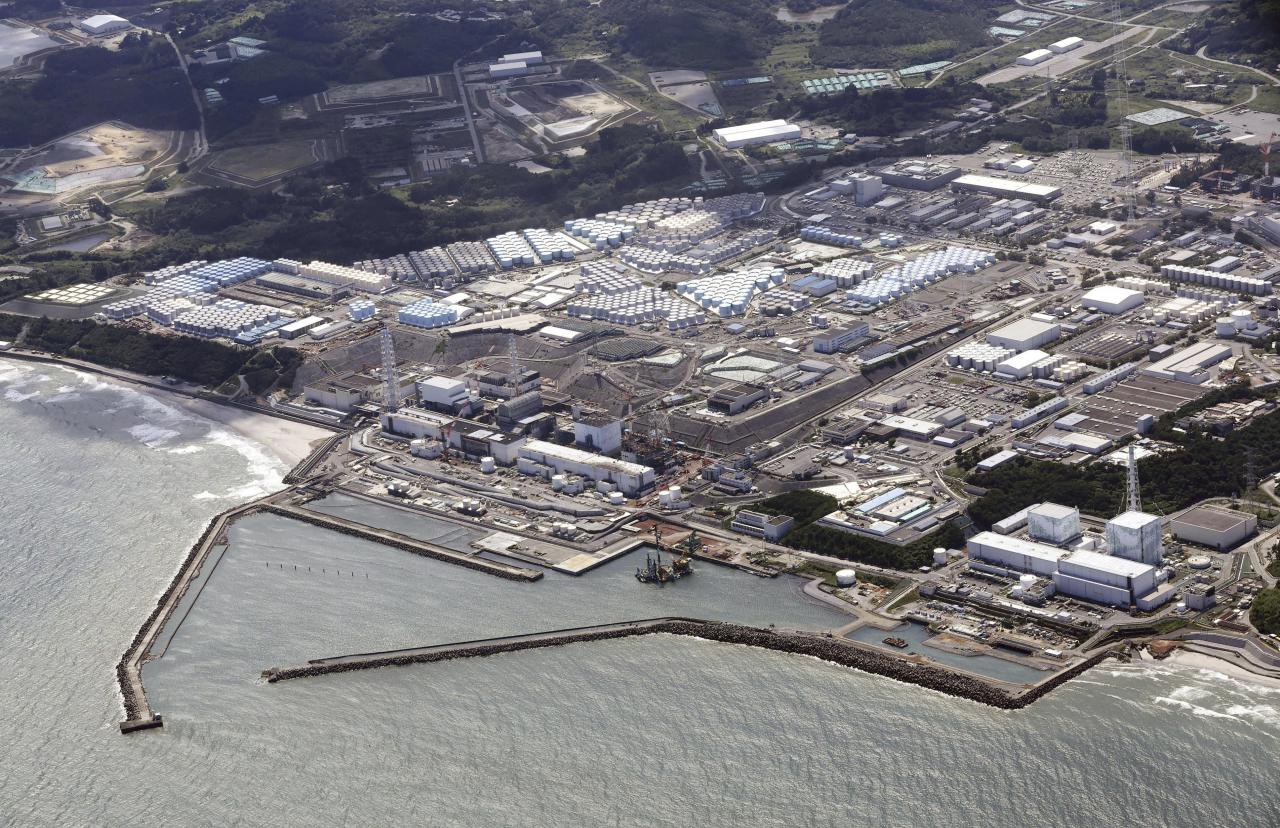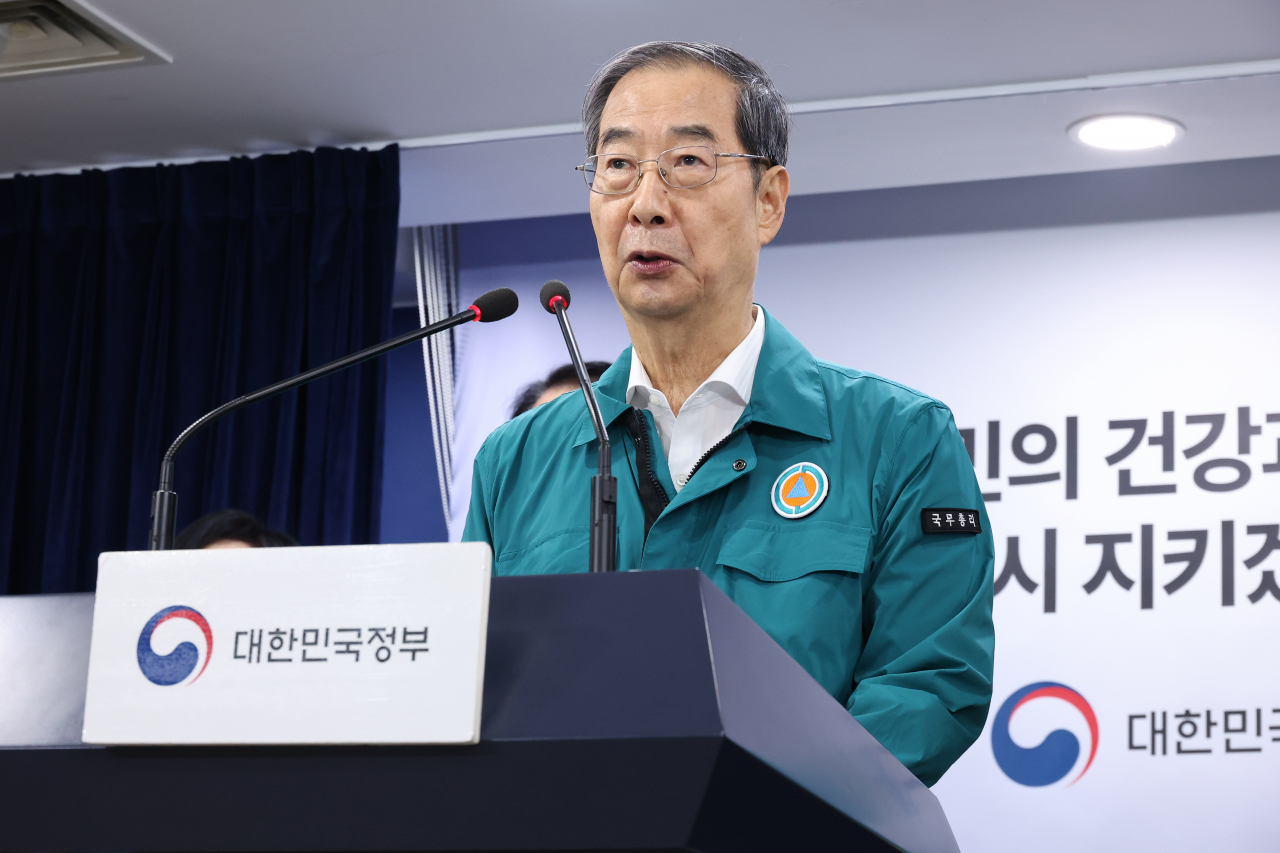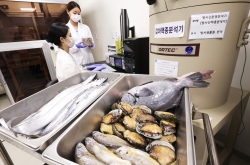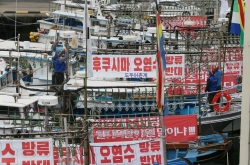 |
This aerial view shows the Fukushima Daiichi nuclear power plant in Fukushima, northern Japan. (AP-Yonhap) |
The South Korean government assured its people of safety as Japan began sending out treated radioactive water from its crippled Fukushima plant on Thursday, while urging Tokyo to commit to transparent information sharing, as protests from the fisheries industry and public concerns continued.
"The IAEA, international academic circles in the field of nuclear energy and nuclear experts here together say that there is no reason for Koreans to worry if Japan releases the water according to the announced plan," Prime Minister Han Duck-soo said in an address to the nation.
"Now, what matters is Japan's effort to strictly abide by scientific standards and provide information with transparency as promised to the international community. I expect, and urge, the Japanese government to provide information with transparency and responsibility in the next 30 years to come."
Han said Korean experts will regularly visit the International Atomic Energy Agency office at the site every two weeks, starting as early as the upcoming weekend, while Japanese authorities are to disclose information over the proceedings of the radioactive water release every hour -- in languages including Korean -- and to communicate with foreign affairs officials here in case of any abnormalities in the release.
Plus, South Korea is set to establish a monitoring system at 10 spots in international waters around Pacific Ocean islands, in addition to eight spots in international waters near Japan currently under Korean monitoring.
"Please trust the government, and trust the science," Han said. "I'm asking (the Korean people) to take a long view with a reasonable approach when facing this matter."
Han again downplayed the possibility of lifting an import ban on seafood from eight Japanese prefectures, including Fukushima, and on 27 agricultural items from 15 Japanese prefectures, amid growing fears about seafood with the execution of the release plan. Korea has also conducted all-out radioactivity checks for seafood from the rest of the Japanese prefectures.
"There are concerns among the public that the Japanese food import restrictions could be lifted or eased and thereby affect food stability," Han said. "This will never happen."
He added the government sees the issue as "separate from the matter of scientifically treated wastewater release."
The government is scrambling to carry out a budget of 64 billion won ($48.5 million) to prop up the consumption of seafood, adding more funds could be allocated if needed. The size of the budget is to double next year.
Funding to stabilize the retail price of seafood here is being prepared. The government declined to elaborate on the size of the budget, but hinted it would "be the largest in history."
Moreover, the emergency fund to extend financial support involving fisheries will increase fivefold. Their loan limits will also be eased, and more regulations will be lifted, according to the government.
Prior to the announcement, a coalition of coastal fishery operators released a statement Thursday morning that Korean seafood is "extremely safe," urging the government to draw up support measures.
"If we are left with the options of giving up on our dedication to fisheries industry, and trusting the science to improve our industry, we would go for the latter," read the coalition's statement.
"I hope there is no Korean people and fishers falling for the malicious rumors that our waters will be contaminated."
 |
Prime Minister Han Duck-soo delivers the address to the nation on Thursday at the Government Complex Seoul. (Yonhap) |
This comes immediately after the release of radioactive water stored at the Fukushima Daiichi power plant site -- crippled by a 2011 tsunami -- began at 1 p.m. Thursday, in accordance with the plan announced Tuesday by Japanese Prime Minister Fumio Kishida.
Tokyo plans to release some 1.4 billion liters of radioactive water over the course of at least three decades. By March 2024, only 31,200 metric tons of the treated water -- or 2 percent of the stored water -- will be released. The released water will circle around the Pacific Ocean in the long run and reach waters near the Korean Peninsula, according to its projection.
An official of Tokyo Electric Power Co., operator of the Fukushima Daiichi power plant in charge of the water release operation, said via a live broadcast that it had opened the valves to release the water,
Japan in April 2021 confirmed the plan to treat the water -- enough to fill about 500 Olympic-size swimming pools -- and release it into the Pacific Ocean. The tanks at the crippled site were expected to reach full capacity possibly as early as later this year, 12 years after the meltdown due to constant inflow of rainwater and groundwater.
In July, the United Nations nuclear watchdog International Atomic Energy Agency signaled approval of Japan's radioactive water release plan, which filters out over 60 types of radionuclides from the contaminated water -- except for tritium -- and dilutes it again with seawater in order to lower the concentration of radioactive elements to meet international standards.
Out of the 30 types of nuclides under review by the IAEA task force in its July report, tritium is "the only radionuclide that cannot be removed" by Tepco's purification process to meet existing regulatory concentration limits for the discharge. Tepco has to "calculate the necessary dilution" to keep the level of tritium below maximum tritium concentration of 1,500 becquerels-per-liter for the discharge, or the total annual tritium discharge limit of 22 terrabecquerels.
Kishida visited the Fukushima site on Sunday, immediately after his return from a trilateral summit with President Yoon Suk Yeol and US President Joe Biden at Camp David. South Korea was notified of the finalized water release plan Monday, a day prior to Japan's announcement Tuesday.











